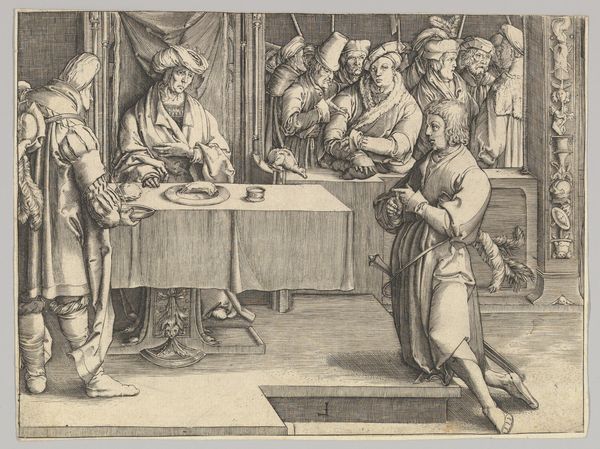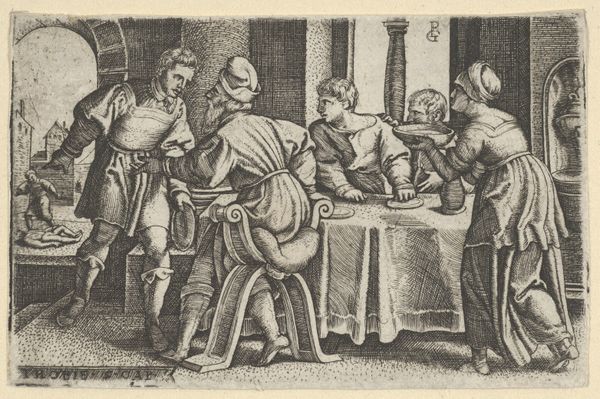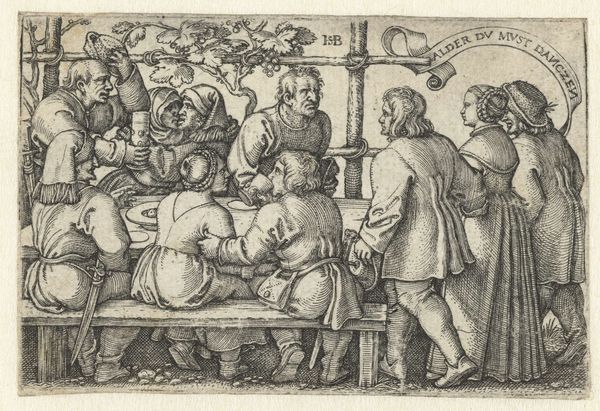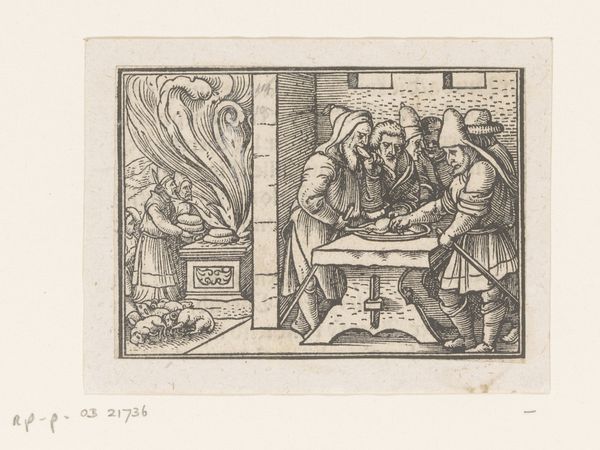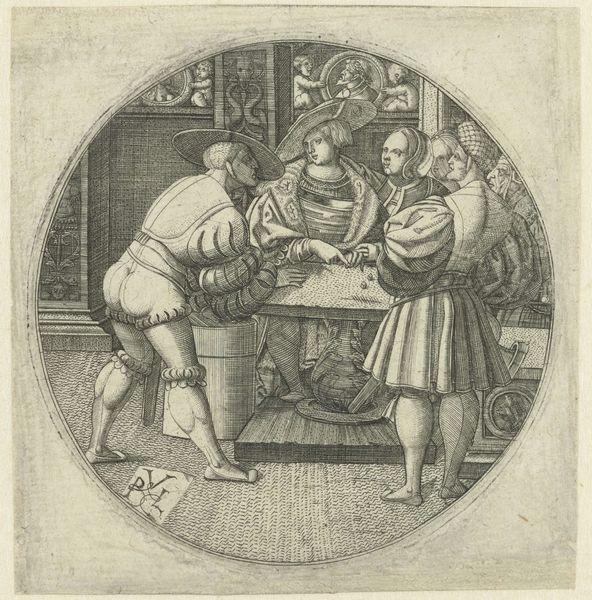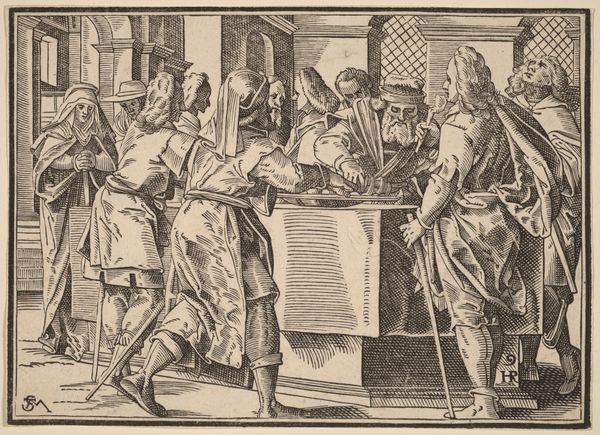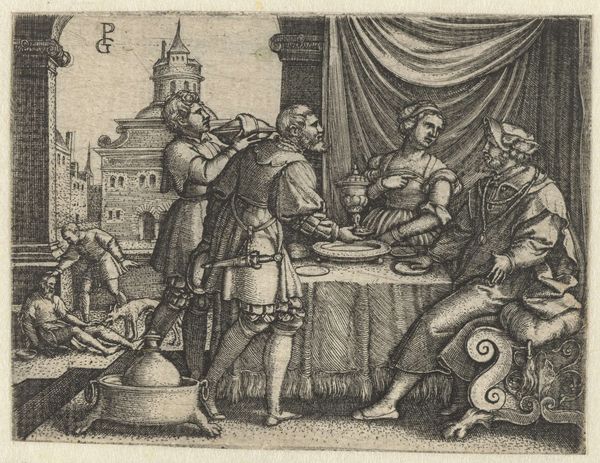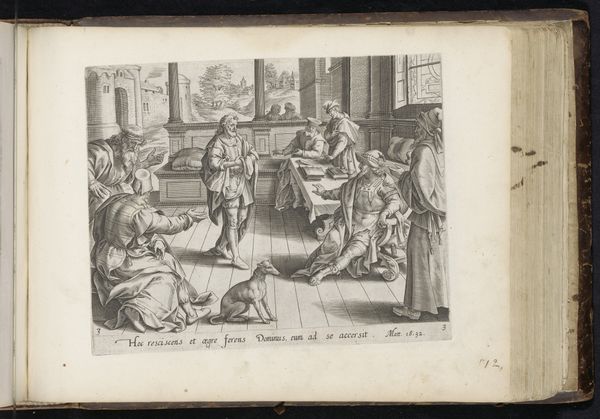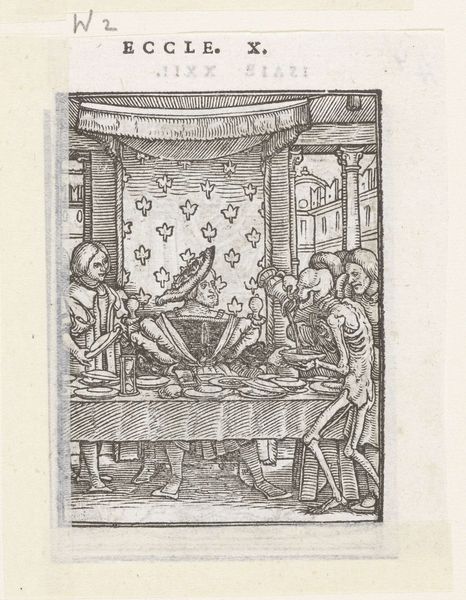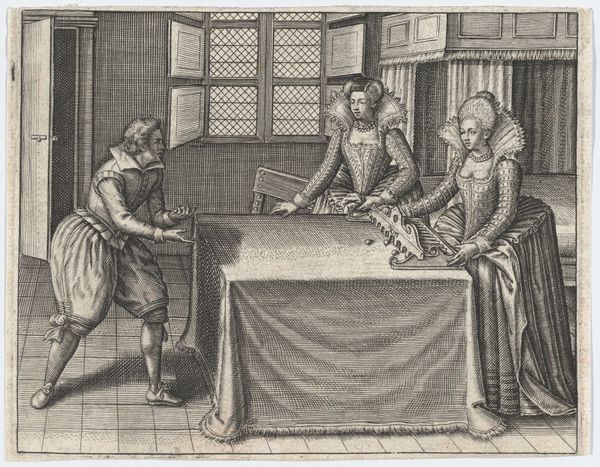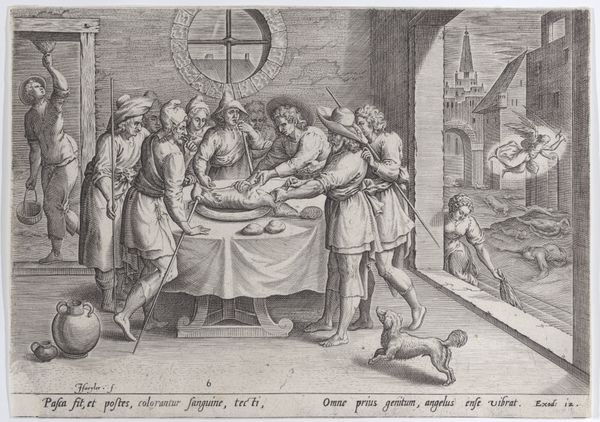
print, woodcut
#
medieval
#
narrative-art
# print
#
pen sketch
#
old engraving style
#
figuration
#
woodcut
#
genre-painting
#
northern-renaissance
Dimensions: height 60 mm, width 85 mm
Copyright: Rijks Museum: Open Domain
Editor: This is *Pesach*, a woodcut print made around 1522 by an anonymous artist. It’s currently held at the Rijksmuseum. I’m really struck by the somewhat crude, yet detailed carving – you can clearly see the texture of the wood. How do you interpret this work? Curator: Looking at *Pesach* through a historical lens, it becomes quite fascinating. The piece portrays what appears to be a Passover Seder. Notice how the figures are dressed – their clothing places them firmly in the early 16th century. It depicts a Jewish religious rite for a Christian audience, but what message does it try to communicate about Jewish people and culture, and for what purpose? Editor: That's interesting. I wouldn’t have considered the audience’s perspective. Is there a chance this artwork contributed to any existing stereotypes about Jewish culture at the time? Curator: It's highly probable. Consider the context of 16th-century Europe; social, and religious tensions were prevalent. Prints like this, circulated widely, shaped public opinion. Does the representation appear sympathetic, critical, or something in between? What are the politics of its imagery? Editor: It feels like a documentary snapshot of Jewish cultural practice. So it aimed for neutrality, perhaps? Curator: The 'neutrality' of a visual representation is always up for debate. Are the figures caricatured in any way? How might subtle visual cues reinforce existing societal biases or misunderstandings? Art serves a role within a larger web of political power, which impacts society's values and cultural practices. Editor: That makes a lot of sense. I see that this seemingly simple genre painting holds layers of social and political commentary! Curator: Exactly! By considering the historical, social, and political dimensions, we start to understand how museums collect them, and their powerful public role. Hopefully now you will consider these questions when examining artworks. Editor: Definitely. It is more than just aesthetics or art. Thank you for your help.
Comments
No comments
Be the first to comment and join the conversation on the ultimate creative platform.
